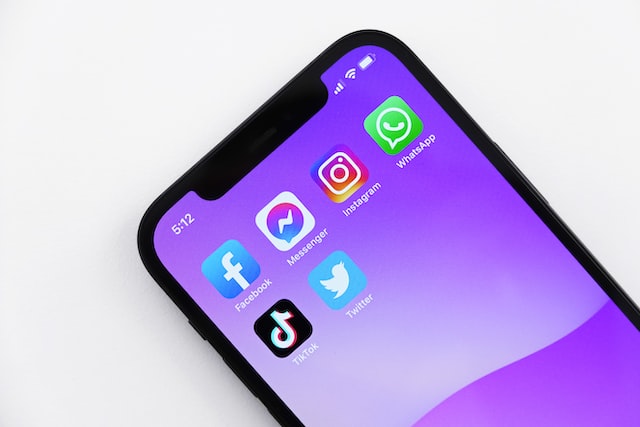Copywriting is a huge part of any online marketing strategy. It’s how you communicate with your customers, and it’s essential to get it right. Your tone of voice can make or break your branding – it’s the first thing people notice when interacting with your company. In this blog post, we’ll discuss the tone of voice in detail and give you some tips on how to nail it for social media, blog posts, and email campaigns!
Tone of Voice
When it comes to tone of voice, there are two main things you need to consider: audience and message. You need to ensure that your tone of voice is appropriate for the people you’re trying to reach and that it aligns with the overall message you’re trying to communicate. Let’s take a closer look at each of these factors.

Know your audience: The first step is to understand who your target audience is. What are their interests? What are their pain points? What kind of language do they use? When deciding on the tone of voice for your business, consider your audience and what you want to achieve with your writing.
If you’re selling B2B products or services, you’ll likely need a more formal tone than if you’re selling B2C products or services.
Your tone of voice should be based on your target audience. Your tone should be more casual and informal if you’re targeting a younger demographic. Your tone should be more formal and professional if you’re targeting a more mature audience. Formal tones are usually associated with trustworthiness and professionalism, while informal tones are associated with friendliness and approachability.
The key is finding a balance – you don’t want to sound like you’re talking down to your audience or not taking them seriously.
Test different tones: Not sure what tone to use? Try out a few different options and see what works best. A/B testing is a great way to do this. Write two versions of the same piece using different tones of voice and see which one performs better in terms of conversion rate or click-through rate. Then stick with the winner!
Keep it consistent: Once you have narrowed down the tone you want to use for your brand, It’s important to be consistent with your tone of voice across all channels. This will help create a cohesive brand identity that people will recognize and trust. So if you use a casual, conversational tone on your website, ensure that same tone carries over to your email marketing and social media posts.
Get help from a professional: If you’re still not sure what direction to go in terms of tone of voice, consider hiring a brand or marketing agency that can help you find the right voice for your brand identity.
Copywriting for Social Media
Regarding social media, it’s important to remember that each platform has its unique culture and tone.
For example, Twitter is known for being fast-paced and concise, while Instagram is more visual and laid-back. As a result, it’s important to consider the tone of each platform when crafting your social media content.
For instance, if you’re sharing a news update on Twitter, you’ll want to be sure to keep it short and to the point. Many company updates are shared via Twitter, so while conversational, you may want to remain more professional in tone to ensure customers feel valued and listened to when they engage with your posts or contact you for customer service reasons.
On the other hand, if you’re sharing a photo on Instagram, you’ll want to ensure it’s visually appealing and in keeping with the platform’s more laid-back vibe. The copy must be engaging enough so people don’t scroll past it and continue scrolling through other content in their feeds. Short and snappy, witty quips and interesting takes do well here.
By taking the time to consider the culture and tone of each social media platform and the demographics of the audience who are likely to use that platform, you’ll be able to produce content that resonates with your audience.
Our final social media copy tip is to remember that social media is a public forum, so err on the side of caution when it comes to sensitive topics.

Copywriting for Blog Posts and Articles
The tone you use will depend on the type of blog or article you’re writing. The tone of voice you use in your blog will greatly impact how effective your writing is.
If you’re writing a personal blog, you can afford to be more informal and personal in your tone. This will help to build a rapport with your readers and make your blog feel more approachable.
However, if you’re writing a corporate blog, it’s important to strike a balance between being professional and sounding like a robot. In this case, a more formal tone is usually best. Ultimately, the key is finding the right tone for your audience and message.
Lastly, any article or website copy should be informative and easy to read.
Breaking up text with
- headlines,
- lists,
- bullet points,
- images
- and white space
will help make it more digestible for users.
Make sure to include internal linking to your most important service pages. And as with all business communications, proper grammar and punctuation are a must.
Copywriting for Email Marketing
Finally, let’s talk about email campaigns. Email campaigns are a great way to reach out to your customers and promote your product or service. Transactional emails are those that are sent in response to an action taken by the recipient, such as a purchase confirmation or a password reset. Promotional emails are those that are sent to promote a product or service.
However, it’s important to choose the right tone for your email, as this can make a big difference in how your message is received. Transactional emails should be more formal and professional, while promotional emails can be more informal and personal. Keep this in mind when crafting your next email campaign, and you’ll be sure to make a lasting impression on your customers.
Our last tip for email marketing copy is that emails should always be clear and concise. They don’t need to always be stuffy or formal, depending on your tone of voice, but you should use proper grammar and punctuation and avoid exclamation points unless absolutely necessary.

Hopefully, this blog post has given you some insights into tone of voice and how to apply it to your own online marketing strategy! Remember, finding the right balance between your audience and message is key. If you can do that, you’ll be well on your way to nailing your tone of voice.
If you need help crafting copy for your website or marketing campaigns or are struggling to find your tone of voice, contact atomicboost today. As experts in digital marketing, we have helped many clients navigate their branding and style.
Posted on 30th September 2022 by Jack Wilkinson



